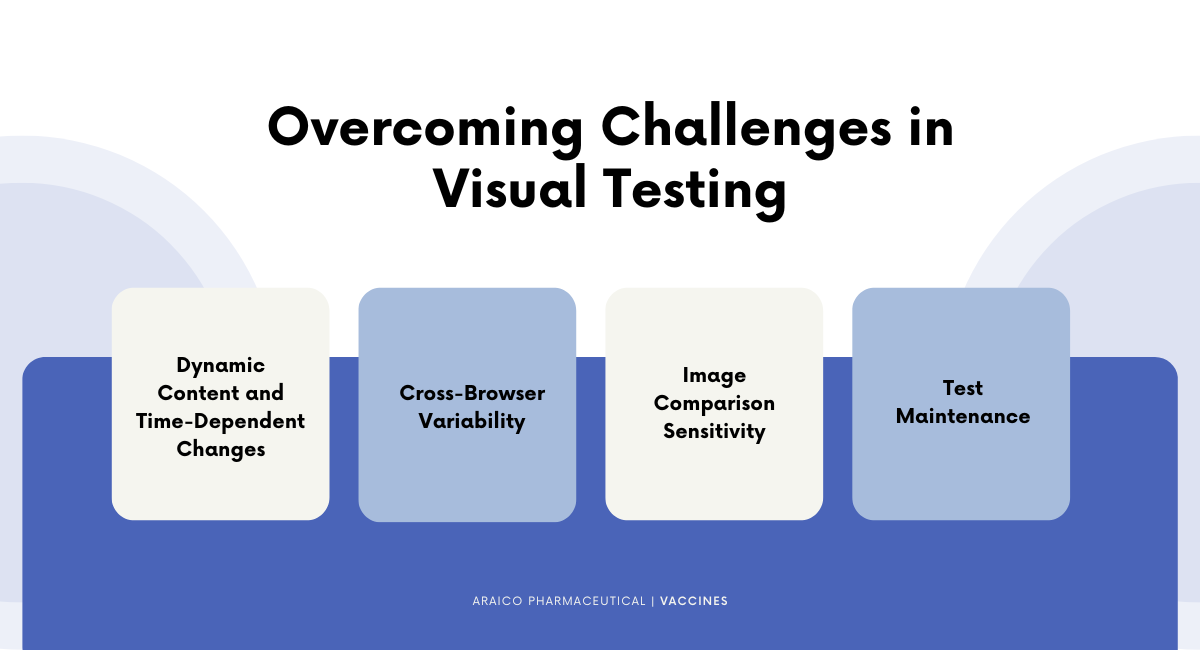User interface (UI) and user experience (UX) have become paramount for success. Users demand seamless, visually appealing, and intuitive interactions with digital products. To meet these expectations, developers and QA teams need to ensure that their UI/UX designs not only look good on paper but also function flawlessly in the real world.
This is where visual testing comes into play, providing a critical component in the quality assurance process.
Understanding Visual Testing
Visual testing is a subset of software testing that focuses on verifying the appearance of a user interface. While traditional testing methods may uncover functional bugs, they often fall short when it comes to detecting visual defects. This testing, on the other hand, is specifically designed to identify discrepancies between expected and actual UI appearances.
The process involves comparing screenshots of an application or website in different states, such as before and after code changes, to pinpoint visual differences. This meticulous approach ensures that developers catch even the subtlest UI discrepancies that could compromise the overall user experience.
The Importance of Visual Testing in UI/UX

Enhanced User Experience:
Visual bugs can have a direct impact on the user experience. Elements misaligned, inconsistent color schemes, or distorted images can lead to frustration and a negative perception of the product.
This testing helps guarantee a polished UI, ensuring that users receive a seamless and visually pleasing experience.
Brand Consistency:
Consistency is key to building a strong brand identity. Visual testing ensures that the UI adheres to the established design guidelines, maintaining a consistent look and feel across different screens and devices.
A visually cohesive product instills confidence in users and reinforces brand recognition.
Responsive Design Validation:
With the proliferation of devices with varying screen sizes, ensuring a responsive design is crucial. Visual testing verifies that UI elements adapt appropriately to different screen resolutions and orientations.
This aspect is particularly significant in the mobile-first era, where users expect a consistent experience across smartphones, tablets, and desktops.
Accelerated Development Cycles:
Traditional testing methods can be time-consuming, especially when dealing with visual aspects. Visual testing automates the comparison process, allowing teams to identify and address visual defects quickly.
Faster feedback loops lead to accelerated development cycles, enabling teams to release updates and features more rapidly.
Cross-Browser Compatibility:
Browsers interpret code differently, and visual discrepancies may arise when rendering web pages. Visual testing ensures that UI elements appear consistently across various browsers, preventing users from encountering unexpected issues based on their browser choice.
Incorporating Visual Testing into Your Workflow
Now that we understand the significance of visual testing in UI/UX, let's delve into how you can seamlessly integrate it into your development workflow.
Choose the Right Visual Testing Tools
Selecting the appropriate tools is the first step in establishing an effective visual testing process. Some popular visual testing tools include:
- Percy: Percy is a visual testing platform that integrates with your existing testing framework. It captures screenshots of your application at different states and highlights visual differences.
- Applitools: Applitools offers AI-powered visual testing solutions that can automatically detect and highlight visual bugs. It supports various programming languages and testing frameworks.
Best Practices for Visual Testing Success

Create Meaningful Baselines:
Baseline screenshots should represent the intended appearance of UI components. Include various states and use cases to create comprehensive baseline images.
Handle Dynamic Content Appropriately:
Dynamic content, such as advertisements or real-time data, may cause visual differences. Implement dynamic content handling strategies to accommodate these changes without triggering false positives in your visual tests.
Parameterize Tests for Reusability:
Parameterizing visual tests allows you to reuse them across different scenarios. For example, you can run the same test with various data inputs or on different browsers.
Implement Visual Testing in Different Environments:
Test your application or website in various environments (development, staging, production) to ensure consistent visual behavior across different deployment scenarios.
Collaborate Across Teams:
Visual testing is most effective when it involves collaboration between development, QA, and design teams. Regular communication ensures that everyone is aligned on visual standards and expectations.
Monitor Visual Test Results:
Establish a monitoring system to track visual test results over time. This helps identify patterns, such as recurring false positives or a gradual degradation in visual quality.
Regularly Update Baselines:
As your application evolves, so should your baseline screenshots. Regularly update baseline images to reflect the current design standards and UI changes.
Book a Demo and experience ContextQA testing tool in action with a complimentary, no-obligation session tailored to your business needs.
Overcoming Challenges in Visual Testing

While this testing offers numerous benefits, it's not without its challenges. Addressing these hurdles is essential for a successful implementation.
Dynamic Content and Time-Dependent Changes:
Dynamic content, such as rotating banners or real-time data, can lead to false positives in this testing. To overcome this, consider implementing dynamic content handling mechanisms or excluding dynamic areas from visual checks.
Cross-Browser Variability:
Browsers interpret CSS and HTML differently, leading to variations in how web pages are rendered. Visual testing tools should account for these differences to ensure consistent results across various browsers.
Image Comparison Sensitivity:
Tuning the sensitivity of image comparison algorithms is crucial. A tool that's too sensitive may trigger false positives, while one that's too lenient might miss subtle visual differences. Regularly fine-tune sensitivity settings based on the specifics of your application.
Test Maintenance:
As your application evolves, visual tests may require updates to reflect design changes. Establish a process for regularly reviewing and updating visual tests to ensure their relevance and accuracy.
Level Up
Delivering a flawless user experience is non-negotiable. Visual testing emerges as a game-changer in achieving this goal, allowing development teams to catch visual defects early in the development cycle and maintain a visually consistent and appealing UI.
By incorporating visual testing into your workflow, choosing the right tools, and following best practices, you can level up your UI/UX game.
The result? A product that not only meets but exceeds user expectations, setting the stage for success in the dynamic world of software development.
You may also be interested in: The Next Stage of Automation: How AI is Transforming Software Testing for the Future
We make it easy to get started with ContextQA tool: Start Free Trial.
